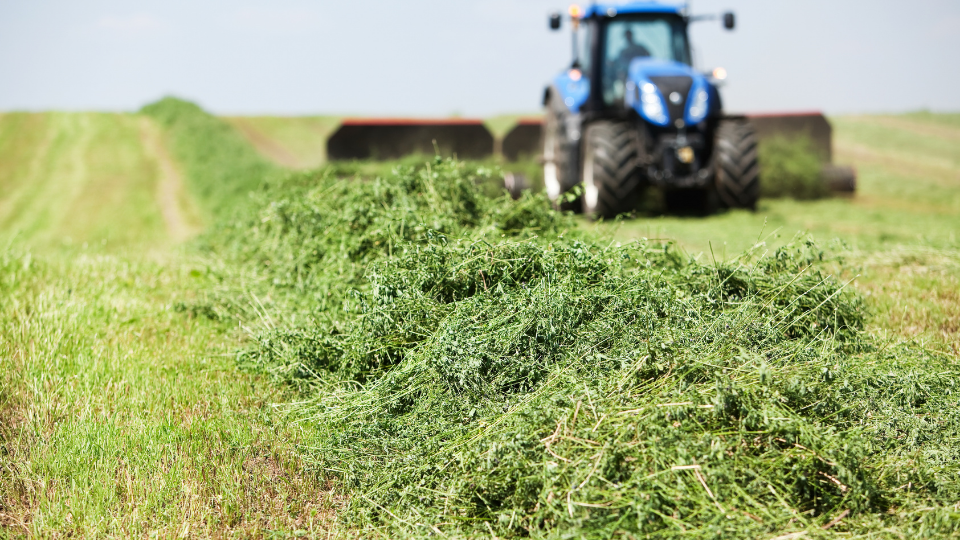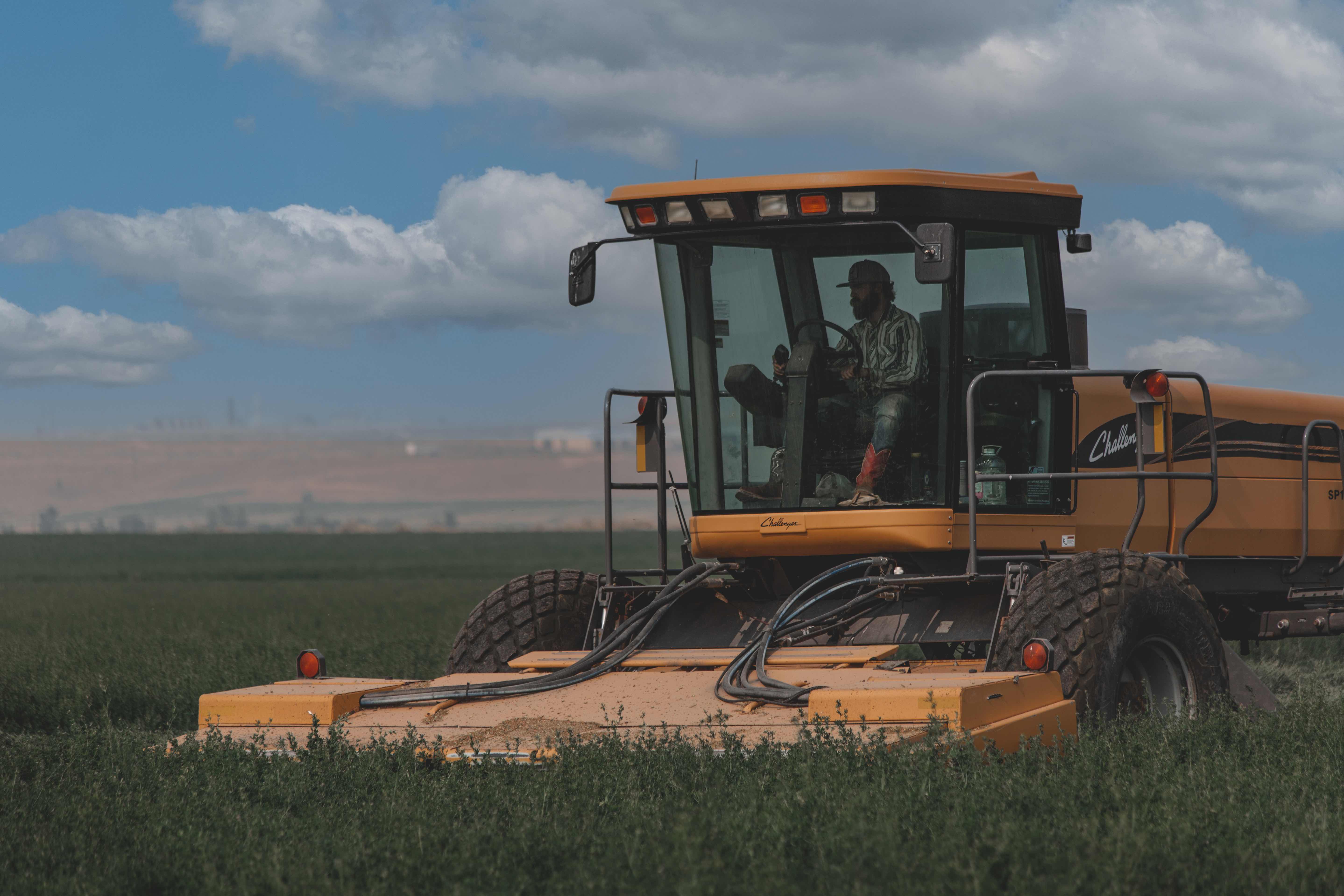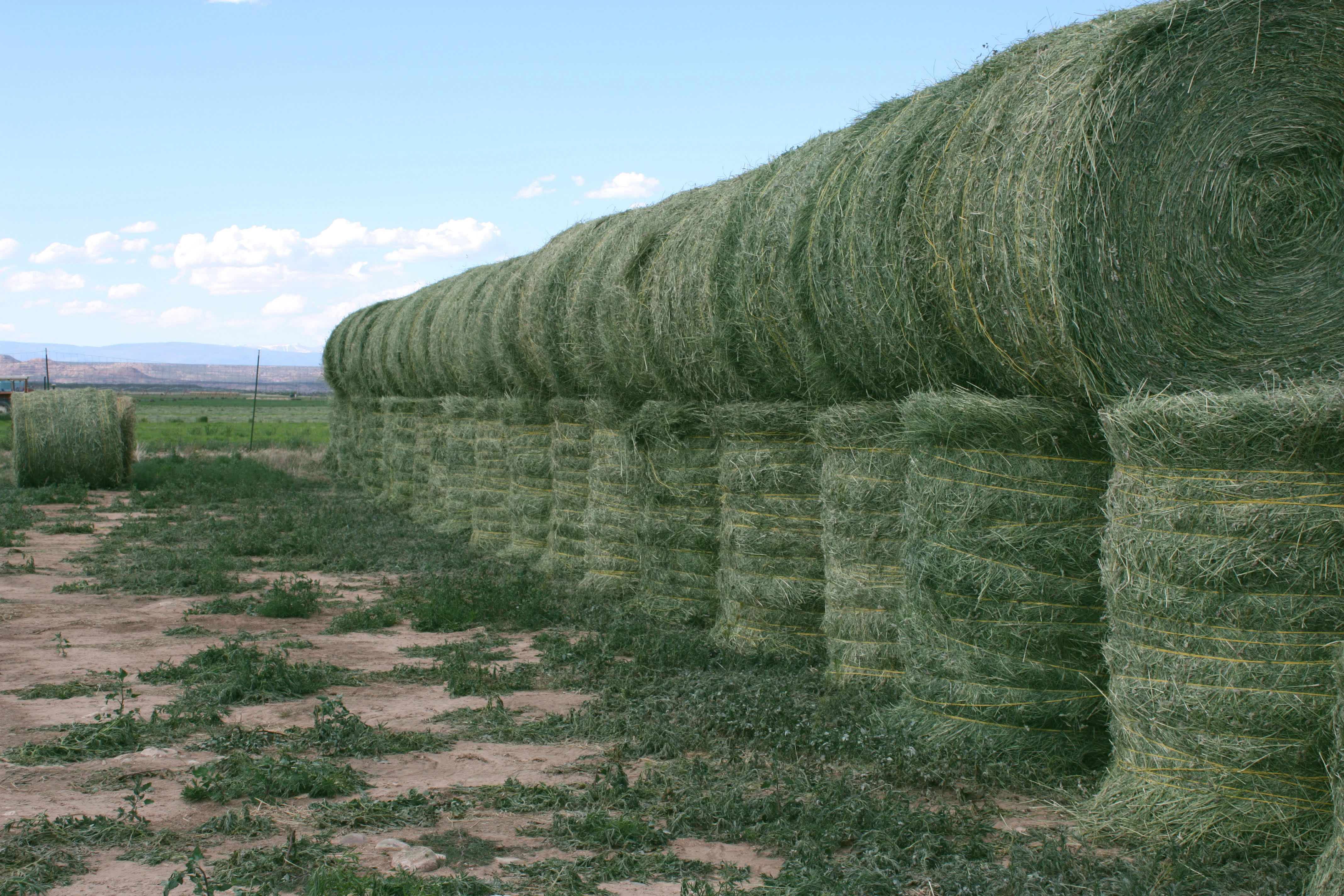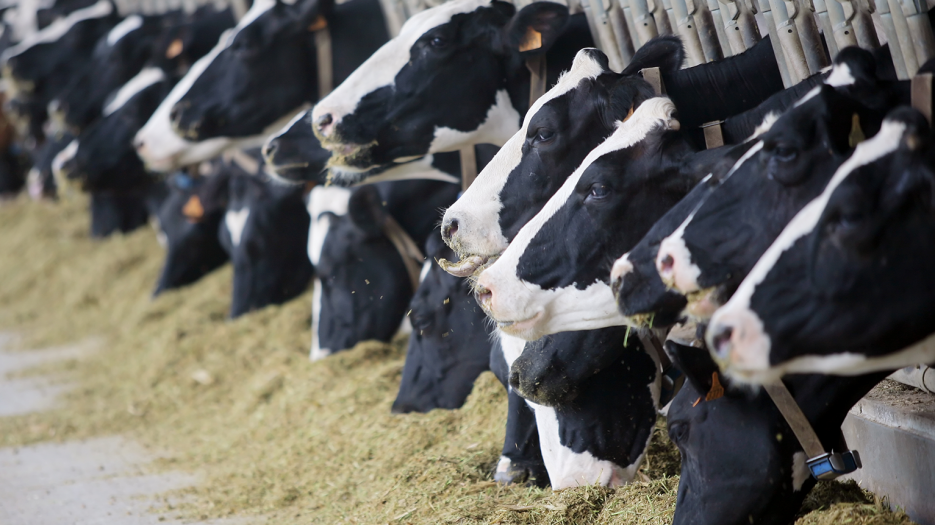Alfalfa: From Field to Fork (Yes, You Do Eat It, You Just Don’t Know It)
Author
Published
10/29/2024
Alfalfa has been featured often in the news the past few years in Utah. The topic inevitably comes up in many public conversations around water in Utah and across the West, since water is such a valuable and limited resource. To be fair, alfalfa is a thirsty crop, taking an inch of water a week to grow, on average. So why do farmers continue to grow alfalfa in Utah?
To answer that question, let’s follow alfalfa from the field to your plate.
Growing
Alfalfa is a perennial flowering plant that produces lots of green leaves and will have purple flowers if it is not cut before it blooms. It is planted by spreading seeds on finely tilled, firm soil. After tilling, farmers usually go over the area with a roller to press the seeds into the dirt for a good “soil-to-seed contact”. From its tiny seed, this plant establishes deep root systems that reach for water and nutrients more than 10 feet into the soil, giving the plant amazing drought resilience.
Many farmers in rural Utah grow alfalfa. One of these farmers is Trent Potter, an Idaho farm boy who moved to Utah to ranch with his father-in-law in the late 1980s. He and his wife continue to grow alfalfa, beef cattle, and some small grains in Duchesne.
“Every farmer has their own method, but I like to plant a crop of oats along with the new alfalfa,” Potter said. “The faster growing oats shade and protect the young alfalfa while it’s growing, and then that first year we have an alfalfa-oat mix hay to feed to our beef cattle.”
After planting, a field of alfalfa will produce for 4-5 years before it needs to be replanted.
“Alfalfa is a really great crop because it grows for several years after it is planted, so we don’t have to till every year. This reduces soil erosion and helps sequester more carbon out of the atmosphere.” Potter said.
In Utah’s dry climate, alfalfa needs to be irrigated. This is usually done with a variety of low-flow sprinkler systems (pivots, wheel-lines, etc.) or a method of highly-efficient flood irrigation. Drip irrigation doesn’t work well because the crop is not planted in straight rows and the plants deep roots are spread randomly over the entire field.

“In other parts of the country that get more moisture than we do, farmers don’t have to irrigate their alfalfa, but the interesting thing is that alfalfa actually gets a higher protein content when it’s a little stressed from heat and slight lack of water,” Potter said. “The western United States produces really high-quality hay precisely because we are able to control the irrigation.”
Another Uinta Basin resident, Conley Moon (4th generation farmer), also grows alfalfa hay, corn, and raises beef cattle. He likes to grow alfalfa because it fits Utah’s growing season well, and the arid climate lends itself to producing high-quality, high-protein alfalfa.
“Our climate makes Utah, and the Intermountain West in general, a good place for growing alfalfa,” Moon said. “We have cool springs and falls that produce higher quality alfalfa than in the high heat, and the arid climate prevents high moisture content in the finished product.”
It is also worth noting, that a statistic is often quoted that agriculture uses 80% of Utah’s water, but that’s not entirely correct. Agriculture uses 80% of Utah’s DIVERTED water. Diverted water is water we take out of the environment for human consumption. Of all the snow and rain that falls in Utah, an average of 88.7% stays in the environment or flows down the river. Of the percentage that is diverted for human use, like industrial, residential, etc., agriculture uses 82%. So really, agriculture only uses 4.5% of Utah’s total water (Utah Division of Water Resources).
Harvesting
Once the alfalfa is ready to be harvested, it is cut with a machine called a swather and then left to dry in the field in long rows, called “windrows”.
“It depends on the air temperature and humidity, but a general rule is it takes three days for the hay to dry,” Potter said. “We’re basically dehydrating the cut plants. You want about 10-18% moisture level in the finished bale.”
Farmers monitor moisture levels carefully because if there is too much moisture the hay bale could mold on the inside, and creates the risk of spontaneously combusting (yes, that is possible).
“Another reason why western hay is so highly sought after is that since we have a hot, dry climate we don’t have as many problems with mold or imperfections in the finished bale that states with a lot of natural moisture do,” Potter said.
After the hay is sufficiently dry, it is compressed into a block, known as a hay bale. There are several different size and shape options for bales, but the most common are large rectangular bales or round bales. The bales are held together with twine or plastic wrapping and are stacked together for storage until they are ready to be fed to animals.

Alfalfa is a perennial plant, so it will grow back after the stalks are cut. Farmers in Utah are able to harvest hay 3-5 times in one summer.
“Alfalfa is a very high-yield crop,” Potter said. “Unlike other field crops like wheat, barley, or corn that you can only cut once before you have to replant. You can cut alfalfa over and over and it just keeps producing.”
Feeding
Alfalfa hay is a staple in many animals’ diets, who rely on it for the necessary nutrients to grow and thrive. If an animal eats grass, it loves alfalfa. Many alfalfa farmers grow hay to feed their own livestock, like beef cattle, but large portions can be sold to other markets.
“From the hay that we don’t keep to feed our own cows, the majority goes to the horse market in Texas, or for sheep and goats,” Potter said. “We also sell to local customers who feed alfalfa to a variety of animals, from cows to rabbits.”
Moon sells to the horse market as well, but he also sells a portion to local dairies.
“Dairy farmers often don’t have time to grow most of their own feed, so they purchase a majority of it, including alfalfa hay,” Moon said. “The dairies in our communities are super important to alfalfa producers, a lot of hay gets sold to dairy farms.”

Alfalfa can also be shipped out of state or even overseas. It can be compressed into even smaller cubes or pellets. Since it is dehydrated, it can be stored and shipped more easily than perishable crops.
Each hay farmer sells their hay to different and various markets, depending on their business model, and this is where it comes to your plate.
Many animals that provide humans with needed protein, vitamins, and minerals consume grass. However, during the Utah winters (and many other regions in the United States), there is no grass growing, so the animals are fed hay, which has a higher protein quantity than grass and is more easily digestible. Sometimes, animals are even fed hay year-round, like dairy cows.
“Protein is important for animals for the same reason it’s important to humans,” Moon said. “Take dairy cows for example, the work that they are doing and producing every day is like that of an elite athlete. They need to intake a huge number of calories and protein to stay healthy and keep producing milk that we can all enjoy.”

Those animals then turn that alfalfa hay and grass into meat or dairy products that humans can eat. So, when you bite into that next juicy burger, perfectly seasoned lamb chop, or creamy ice cream, remember that it is alfalfa that helps make it possible.
“Alfalfa really is a remarkable crop,” Potter said, “It’s high-yield, carbon sequestering and lots of animals rely on it for food. Our climate here in Utah makes for very high-quality hay that is coveted by other states. That’s why it is worth the water.”
Want more news on this topic? Farm Bureau members may subscribe for a free email news service, featuring the farm and rural topics that interest them most!
